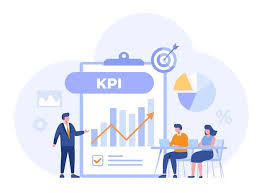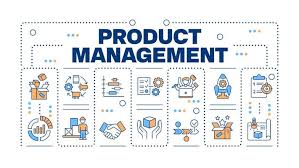What key performance indicators (KPIs) should be tracked for system reliability and performance?
The backbone of any successful tech venture lies in the robust reliability and stellar performance of its systems.Ensuring your applications and infrastructure not only function but excel under pressure is paramount. This isn't merely about avoiding downtime; it's about safeguarding reputation, ensuring business continuity, and driving innovation. To achieve this, a clear, data-driven approach leveraging Key Performance Indicators (KPIs) is indispensable. Let's delve into the essential KPIs that every organization should meticulously track for optimal system health.
Core Performance Metrics for System Health
Effective performance testing and continuous monitoring are critical to understanding system behavior and pinpointing potential issues before they impact users. Several key metrics serve as early warning signals:
• Response Time: This measures how quickly a system processes a request and delivers a result. A response time exceeding three seconds can lead to significant user dissatisfaction and abandonment. Defining acceptable latency and rigorously monitoring it is crucial.
• Throughput: Representing the number of transactions or requests a system can process per second, high throughput indicates efficient handling of heavy loads.
• Error Rate: This KPI tracks the percentage of failed requests against total requests. A high error rate signals the system's inability to manage the current load, often pointing to resource bottlenecks or poor error handling.
• Resource Utilization: Monitoring CPU, memory, and bandwidth consumption helps identify inefficiencies within your infrastructure. Optimizing these can significantly reduce operational costs, especially in cloud environments.
• Latency: The time taken for data to travel from its source to its destination. High latency directly impacts response times and user experience. Mitigation strategies, such as optimizing network paths or using Content Delivery Networks (CDNs), are vital.
Assessing System Scalability and Resilience
Beyond baseline performance, understanding how your system behaves under fluctuating and extreme conditions is critical for long-term viability:
• Scalability: This refers to the system's ability to handle increasing numbers of users, data volume, or transaction volume without a decline in performance. It’s about ensuring your product can grow with your business. Metrics like response time, throughput, and resource utilization are key to quantifying scalability, often assessed through load and stress testing.
• Reliability: A reliable system performs its required functions consistently over a specified period under stated conditions. This involves designing for fault tolerance, implementing redundancy, and robust error handling.
• Robustness/Resilience: Also known as stress testing, this pushes the application to its limits to identify its breaking point and how it recovers from intense loads. It's about ensuring the system doesn't completely collapse but perhaps operates in a degraded mode when overwhelmed.
Beyond Runtime: Code Quality and Technical Debt
Performance isn't just about what happens at runtime. The underlying code and development practices profoundly influence long-term reliability and maintainability:
• Code Quality & Maintainability: This encompasses factors like readability, modularity, reusability, and adherence to coding standards. Poor code quality and lack of consistent standards can lead to significant future maintenance costs. Automated code review tools are invaluable here.
• Technical Debt: This represents the implied cost of future rework incurred by choosing an easy (but limited) solution now instead of a better approach that would take longer. Quantifying technical debt, including its cost of living and remediation, is crucial for prioritizing fixes and preventing future impediments to innovation. Tools like SonarQube and vFunction can help measure code complexity and risk.
• New Feature Development & Adoption: Tracking the number and size of new features, along with their adoption rates, provides insights into development velocity and user value realization.
Fortifying Defenses: Cybersecurity Metrics
In our due diligence engagements, cybersecurity is non-negotiable. It's a foundational aspect of system reliability:
• Vulnerability Detection & Management: Implementing tools that detect vulnerabilities like SQL injection and XSS early in the development lifecycle is critical. Regular security audits and penetration testing are essential to uncover potential threats and weaknesses.
• Compliance Adherence: Adhering to relevant regulatory and industry-specific compliance standards (e.g., GDPR, HIPAA, PCI DSS, SOC 2, ISO 27001) is not just about avoiding fines; it builds trust and demonstrates a commitment to data protection.
• Incident Response Metrics: A well-defined incident response plan is vital. Metrics related to detection time, containment, eradication, and recovery demonstrate the organization's ability to swiftly manage and mitigate security incidents.
Tools and Methodologies for Continuous Monitoring
Tracking these KPIs effectively requires a strategic combination of tools and practices:
• Automated Code Analysis Tools: SAST (Static Application Security Testing) solutions like Checkmarx, Fortify SCA, Semgrep, Klocwork, DeepSource, Coverity, SonarQube, Snyk Code, ShiftLeft, GitHub CodeQL, and Aikido provide real-time feedback, detect vulnerabilities, and analyze code quality directly within IDEs and CI/CD pipelines. These tools can automate security checks for each build, preventing insecure code from reaching production.
• Performance Testing Suites: Tools such as BlazeMeter, JMeter, Taurus, and Gatling enable comprehensive performance, load, and stress testing, simulating real-world user scenarios and helping identify bottlenecks.
• Continuous Monitoring & Reporting: Leveraging GRC platforms and AI/ML analytics can unify siloed data, provide real-time visibility into governance and performance metrics, and flag anomalies. Detailed and customizable reports are essential for prioritizing issues and tracking progress.
In conclusion, a holistic approach to system reliability and performance tracking extends beyond mere functional checks. By diligently measuring these KPIs—from core performance and scalability to code quality, technical debt, and cybersecurity posture—organizations can gain a comprehensive understanding of their technology's health, anticipate challenges, and make informed strategic decisions that ensure long-term success and resilience in an ever-evolving market.



















